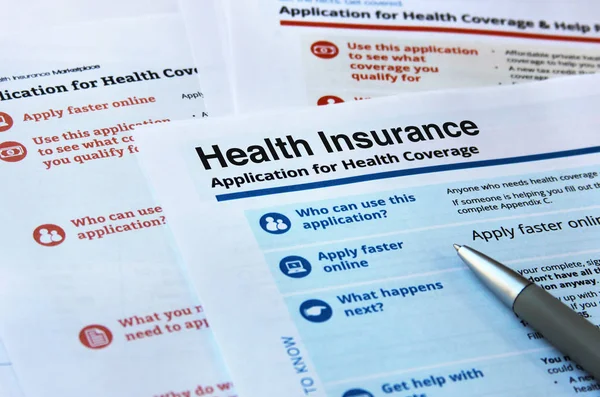
In a surprise move, President Donald Trump this weekend tossed a political curveball into the already contentious health care debate, suggesting that billions in Affordable Care Act subsidies paid to insurance companies should, instead, go directly to Americans. “I am recommending to Senate Republicans that the Hundreds of Billions of Dollars currently being sent to money sucking Insurance Companies BE SENT DIRECTLY TO THE PEOPLE,” Trump wrote in posts that drew both praise and alarm. To Sen. Lindsey Graham, it was “simply brilliant.” Health policy experts cautioned that, without details, the plan could dramatically reshape and potentially destabilize the insurance markets.

1. How ACA Subsidies Work Today
Under the ACA, approximately 90% of marketplace policyholders get subsidies to reduce their premiums each month. Those payments go directly to the insurers to ensure coverage is adequate under federal standards and prohibits practices such as charging more due to pre-existing conditions. A boost in subsidies issued in 2021 increased both eligibility and affordability. At this time, around 22 million of 24 million enrollees utilized federal aid. If taken away, premiums for a benchmark plan may increase from $888 annually in 2025 to $1,904 in 2026-a 114% hike.

2. The Direct Payment Proposal
Trump’s concept could take two forms. One provides cash to policyholders to pay for health services directly, while leaving insurance structures intact. In another, Americans could buy any plan they want-on or off the ACA marketplace. Gerald Anderson of Johns Hopkins University warned that the latter option could bring back “sham insurance” products that don’t cover key services. Leighton Ku of George Washington University added that a flat subsidy- say, $1,000-might suffice for young, healthy people but fall far short for older adults or those with chronic conditions.

3. Risks to the Insurance Pool
The ACA’s stability relies on a balanced mix of healthy and sick enrollees. If younger, healthier people opt for minimal coverage or go uninsured, premiums rise for those remaining-a phenomenon Anderson described as a “death spiral.” Cynthia Cox of KFF explained that once premiums spike, each year’s healthiest enrollees drop out-leaving only the sickest-which drives costs even higher and can push insurers out of the market entirely.

4. Historical Lessons from Direct Cash Transfers
In other systems, direct cash health benefits have increased flexibility but also risked misuse. Michael Cannon with the Cato Institute warned of a “woodwork effect,” where free cash draws in people who might not have enrolled otherwise, driving up government spending beyond current levels under the ACA. Whether recipients actually would purchase insurance or use the money for rent, food, or car payments is the question, said Anderson.

5. The Medical Loss Ratio Factor
The ACA’s MLR rule mandates that insurers must invest at least 80 percent of premiums in medical care and quality improvement. Ku noted that Trump’s proposal does not address this protection, adding that those purchasing coverage outside the large group plans would likely lose financial protections. Furthermore, the cost-plus design of MLR has inadvertently promoted insurers to increase premiums and consolidate, decreasing competition and choices; problems that may be exacerbated if subsidies completely bypass insurers.

6. Economic Fallout of Ending Enhanced Subsidies
The Congressional Budget Office projects that if the enhanced subsidies expire, there will be 3.8 to 4 million more uninsured Americans. Premium hikes insurers are proposing a median 18% increase for 2026 would hit hardest among middle-income enrollees, particularly those who will lose all financial assistance. State and local governments also could see uncompensated care costs rise as more uninsured patients head to emergency rooms, which strains hospital budgets and can lead to service cuts.

7. Impact on Real-World Consumers
For people like Chloe Chalakani, a 31-year-old small business owner in Maine, the math is already untenable. Her $460 monthly premium for a high-deductible plan will increase sharply without subsidies. “I don’t plan to get insurance next year,” she said, echoing a sentiment that could ripple across the market. In contrast, a 64-year-old in West Virginia is preparing to pay $2,800 monthly to keep coverage for vital medications illustrating the chasm between winners and losers in a direct payment system.

8. Policy Tradeoffs Ahead
Mark Shepard of Harvard Kennedy School framed the debate as a choice: keep subsidies generous to maintain broad coverage, or scale them back and accept higher uninsurance. Other countries avoid such instability by mandating coverage and collecting premiums through taxes a model the U.S. abandoned in 2017. Without a mandate, shifting subsidies to individuals risks shrinking the insured pool and accelerating premium increases.

Details have yet to be released by the administration, with White House spokesman Kush Desai urging critics to “hold on their half-baked analyses” until concrete proposals emerge. But with open enrollment already underway in some states and subsidy expiration looming, the stakes for America’s health insurance markets and the millions who rely on them are rising fast.


